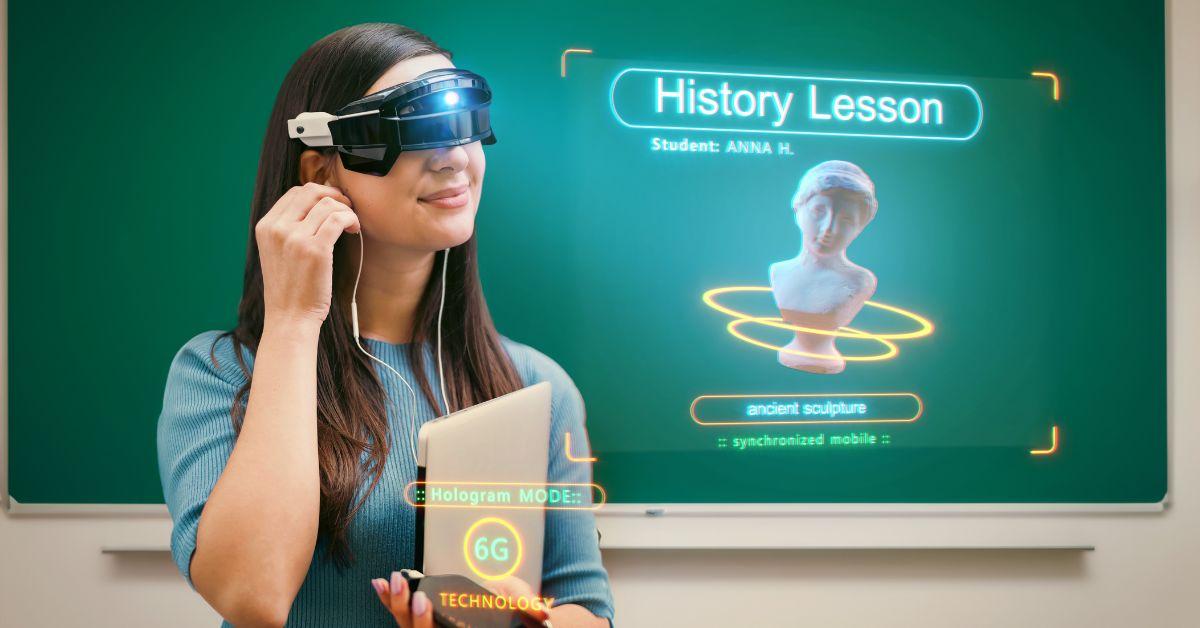Unlocking the Future of Education: How VR and AR Are Transforming Immersive Learning
In recent years, the educational landscape has witnessed a dramatic technological shift. Among the most groundbreaking advancements are Virtual Reality (VR) and Augmented Reality (AR)—two immersive technologies rapidly redefining the way students and educators engage with content. By enabling interactive, lifelike experiences, VR and AR are unlocking new frontiers for immersive learning, fostering deeper understanding, and sparking curiosity like never before.
What Are VR and AR in Education?
Virtual Reality creates a fully immersive, simulated environment, allowing learners too interact with 3D worlds using headsets and motion controllers. Augmented Reality, conversely, overlays digital information, interactive elements, or 3D objects onto the real world through smartphones, tablets, or AR glasses.
Both technologies are being seamlessly integrated into modern classrooms, educational apps, and even remote learning settings, providing unprecedented opportunities for students of all ages and backgrounds.
the Rise of Immersive Learning: Current Trends
- Increased Access: Affordable VR and AR devices are becoming mainstream, removing previous barriers.
- Interactive Curricula: Textbooks are evolving into interactive 3D modules and simulations.
- Global Collaboration: VR platforms enable real-time collaboration among students across continents.
- Blended Learning Environments: Schools are combining traditional methods with immersive experiences for enhanced outcomes.
- K-12 to Higher Education: Use of immersive learning is expanding from K-12 classrooms to universities and professional training.
Key Benefits of VR and AR in Education
Implementing VR and AR technologies in education offers a host of immersive learning benefits:
- Enhanced Engagement: Interactive experiences keep students motivated and attentive.
- Deepened Understanding: Complex subjects—like anatomy or physics—become tangible and easier to grasp.
- Safe Experiments: Simulated labs let students conduct experiments risk-free.
- Personalized Learning: Adaptive modules cater to individual learning styles and paces.
- Improved Collaboration: Virtual group projects foster teamwork and communication skills.
- Diverse Learning Contexts: From field trips to historical reenactments, immersive learning offers real-world exposure without geographic or financial restrictions.
How Immersive Learning Improves Memory Retention
Studies show that learning by doing—the core approach of immersive learning—increases knowledge retention rates substantially. By allowing learners to actively participate and problem-solve, VR and AR educational experiences help solidify concepts more efficiently than passive, lecture-based methods.
Case Studies: Real-World Impact of VR and AR in Education
Medical Training with Virtual Reality
Medical schools around the world are leveraging VR for hands-on surgical training. Case Western Reserve University uses a VR anatomy curriculum, letting students explore the human body in 3D, manipulate organs, and simulate surgical procedures—boosting confidence and accuracy in future doctors.
History Lessons Come Alive
At Lauriston Girls’ School in Australia, students use AR headsets to walk through ancient Rome, interact with citizens, and observe historical events as if they were physically present. Test scores on historical comprehension have notably increased after adopting immersive tools.
STEM Education gets a Boost
Schools incorporating VR-based STEM labs report higher engagement and improved STEM test scores.Such as,Labster provides virtual science labs to schools worldwide,making expensive or dangerous experiments accessible to everyone.
Remote Learning Revolution
During the global pandemic, VR classrooms provided continuity in education, minimizing isolation and enhancing interaction. Education platforms now offer life-like lectures, breakout rooms for group work, and even virtual field trips—all from home.
First-Hand Experience: A Student’s Perspective
“Before VR,biology was just diagrams on paper. Now, wearing a headset, I can walk inside a cell, see how organelles function, and even fix genetic mutations in real-time. It’s like being a scientist in my own mini-universe.”
— Priya S., High School Junior
Practical Tips to Implement VR and AR in your Classroom
- Start Small: Integrate affordable mobile AR apps before investing in full-scale VR setups.
- Align with curriculum: Select VR and AR content that directly supports your learning goals and standards.
- Offer Guided Training: Educators should participate in VR/AR training to maximize effectiveness and safety.
- Ensure accessibility: Opt for platforms that offer multi-device compatibility, closed captioning, and adjustable settings for diverse learners.
- Promote Digital Citizenship: Teach students about safe, ethical, and respectful behavior in virtual environments.
Overcoming Challenges: What Educators Need to Know
While immersive learning holds immense promise,ther are potential challenges:
- Cost: High-end VR devices can be expensive; however,prices are dropping,and many schools are starting with mobile-based AR solutions.
- Motion Sickness: Limit session duration and offer breaks to reduce discomfort.
- Teacher Training: Professional advancement and peer support networks are crucial for successful integration.
- Security & Privacy: Ensure all apps and devices meet data protection regulations and use secure logins.
the Future of immersive Learning: What’s Next?
As technology advances, the line between physical and digital classrooms will continue to blur. Expect future innovations such as:
- AI-Powered Personalized Learning: VR and AR modules will adapt in real-time to meet individual student needs.
- Haptic Feedback: Wearable devices may soon add touch and texture to virtual experiences,increasing immersion.
- Global Learning Communities: Students worldwide will cooperate seamlessly in shared virtual spaces.
- Continued decline in Costs: As devices become more affordable, access to immersive learning will become worldwide.
Conclusion: Embracing the Power of VR and AR in Education
The revolution in immersive learning is well underway. By harnessing the power of VR and AR, educators are not only engaging and inspiring students—they are preparing them for a rapidly evolving, technology-driven world. Whether it’s exploring the pyramids in Egypt, dissecting a virtual frog, or collaborating with peers miles away, immersive technologies have the capacity to unlock every student’s potential.
Ready to bring the future of education to your classroom? Start exploring VR and AR tools today, and witness firsthand how immersive learning is transforming education for generations to come.

